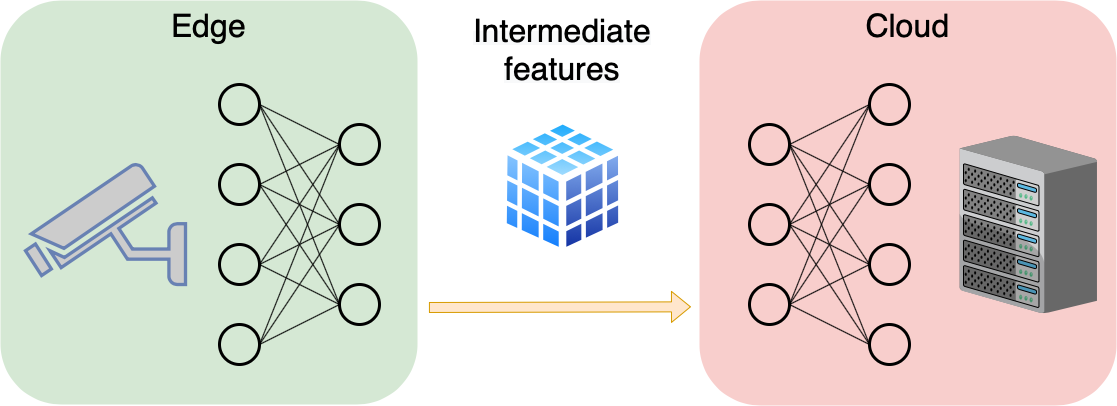
ColliFlow: A Library for Executing Collaborative Intelligence Graphs
NeurIPS 2020 demo.
Collaborative intelligence is a technique for using more than one computing device to perform a computational task. A possible application of this technique is to assist mobile client edge devices in performing inference of deep learning models by sharing the workload with a server. In one typical setup, the mobile device performs a partial inference of the model, up to an intermediate layer. The output tensor of this intermediate layer is then transmitted over a network (e.g. WiFi, LTE, 3G) to a server, which completes the remaining inference, and then transmits the result back to the client. Such a strategy can reduce network usage, resulting in reduced bandwidth costs, lower energy consumption, faster inference, and provide better privacy guarantees. A working implementation of this was shown in our demo at NeurIPS 2019. This year, we present a library that will enable researchers and developers to create collaborative intelligence systems themselves quickly and easily.
This demo presents a new library for developing and deploying collaborative intelligence systems. Computational and communication subprocesses are expressed as a directed acyclic graph. Expressing the entire process as a computational graph provides several advantages including modularity, graph serializability and transmission, and easier scheduling and optimization.
Library features include:
- Graph definition via a functional API inspired by Keras and PyTorch
- Over-the-network execution of graphs that span across multiple devices
- API for Android (Kotlin/Java) edge clients and servers (Python)
- Integration with Reactive Extensions (Rx)
- Asynchronous execution and multi-threading support
- Backpressure handling
- Modules for network transmission of compressed feature tensor data
Library source code and complete examples will be made available at this GitHub repository in the coming weeks. Please bookmark to stay tuned!